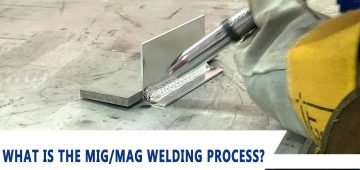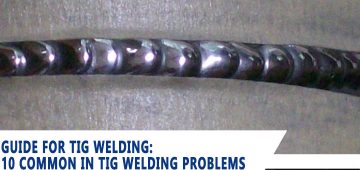There are many best methods to fuse metals by welding through various methods. Among many options are MIG and TIG — MIG stands for Metal Inert Gas and Tungsten Inert Gas. The debate over which method is the best-doing rounds for quite some time now. Each method has its benefits, given the nature of the work/project.
To compare the two, let us help you understand MIG welding and TIG welding. We will additionally look into their differences and ultimately choose which is better.
What is MIG?
Metal Inert Gas welding or MIG welding is the popular and easy welding process. A consumable wire electrode is needed to create an electrical arc between the item being welded and the consumable wire doing the welding. The metal rod is used as an electrode and also as a filling material.
Once the metal heats up and the welding process begins, the welding gun releases inert gas from the gas nozzle to keep the contaminants away. The gas is the combination of CO2 and Argon.
MIG Welding Components –
- Power — The source is mainly DC with a steady voltage.
- Wire
- Electrode
- Torch
- Conduit
- Filler metal
- Gas shielding
Tungsten Inert Gas welding or TIG welding is named because of the tungsten electrode inside the welding. Since the tungsten doesn’t readily melt, it conducts the electricity arc directly to the components you need to fuse. In other words, the wire is held by the operator that is touched to the electrode to melt into the base item.
TIG welding, or Tungsten Inert Gas welding, is very similar to MIG welding. TIG still relies on a wire to feed and heat up to melt the base item and wire to form the weld.
TIG Welding Components –
- Power — The source can be AC or DC.
- Torch
- Foot pedal -This controls the electricity that goes to the torch.
- Electrode and gas shielding
- Filler material –
- Backing bars: These help cool the weld area faster than on its own.
Applications of MIG & TIG Welding
MIG Welding
There are various MIG welding applications, and before that, one has to gauge how a particular welding process fits the project. For instance, when working on thicker metals, the filler used in MIG welding will firmly hold the parts.
MIG welding is versatile and can be used on a wide variety of projects as long as the welder matches the gas and wire to the types of metal he/she needs to conjoin.
Here are some of the examples of MIG applications:
- Metal component repairs
- Automotive repairs and manufacturing
- Trailer hitches
- Farming equipment
- Construction welding
- Pipe welding
- Underwater welding projects
- Railroad track repair
- Shipbuilding
TIG Welding
For a work that requires precision, TIG welding is the top choice. It can be used on various metals (steel, bronze, nickel, brass, copper, gold, etc.), which is why the process is applied in diverse industries, helping create and repair many items.
This welding process is known for its strength and precision.
Here are some of the examples of industries that use TIG welding –
- Aircrafts & Spaceships
- Automobile
- Industrial fixtures
- Metal sculptures
Which one is better — MIG or TIG?
Although the process may seem similar, some differences set the processes apart. For instance, MIG uses a consumable wire, whereas TIG uses a tungsten electrode that isn’t consumable.
Now, each welding process has its usage that best fits them; that is where the difference lies. If you want speed over accuracy, MIG is for you, and if you choose the latter, TIG can give you the best results. TIG welding is more suitable for thinner metals, and MIG welds work well with extensive projects with thick metals.
Your better understanding of the MIG and TIG welding process will help you make an informed choice when working on the project.





